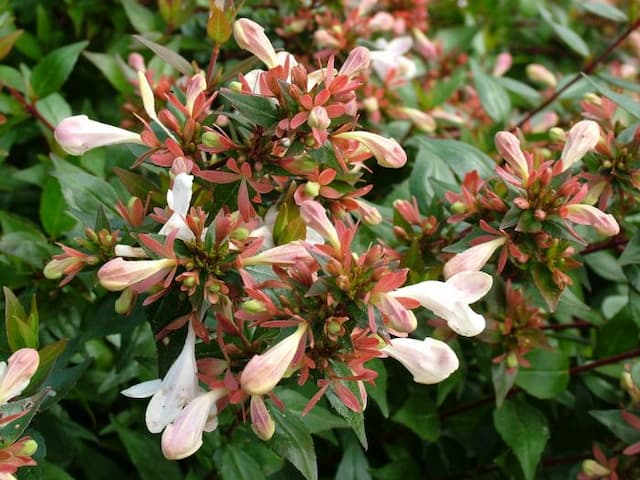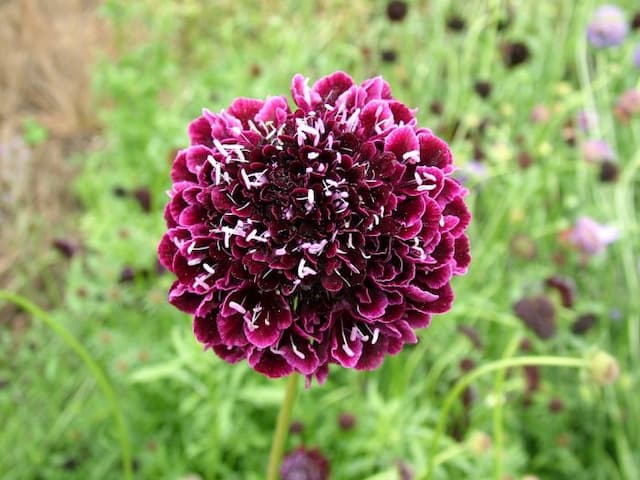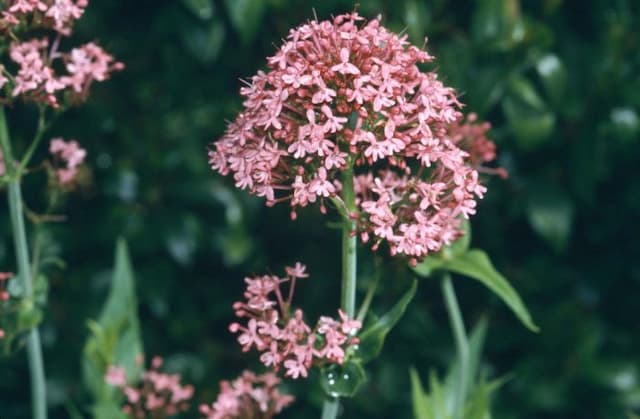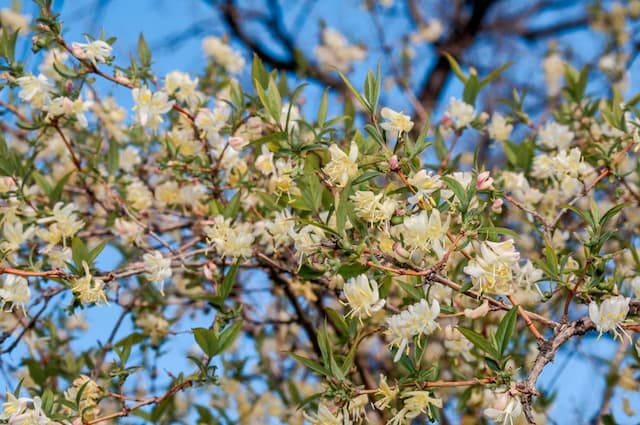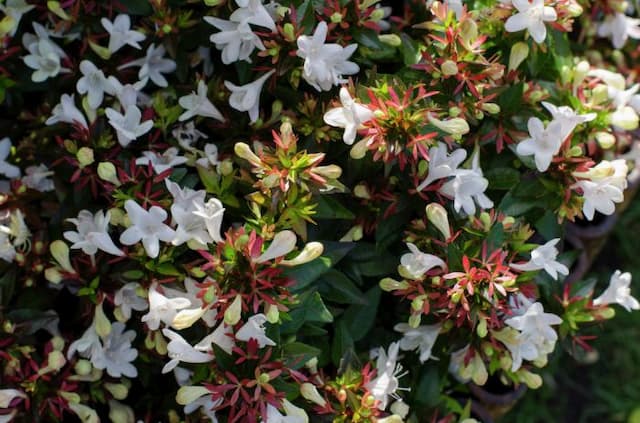Teasel Dipsacus fullonum

ABOUT
Dipsacus fullonum, commonly known as the common teasel, is a robust, biennial plant that boasts a number of distinctive features. In its first year, it forms a basal rosette of leaves that are oblong, with a prickly texture and a slightly bluish-green color. The rosette grows outwards with leaves that are arranged oppositely on the stalk, and edges that have small spines. In its second year, the common teasel produces tall, stiff flowering stems that can be fairly thick and also have spiny bracts. The flowers are small and dense, typically lavender to purple-colored, and they form in oval to cylindrical heads at the top of each stem. These flower heads are surrounded by spiny bracts that are longer than the flowers themselves, giving the plant a spiky, almost crown-like appearance. After the flowers bloom, they leave behind hard, cone-like seed heads that are often seen standing in the winter, providing architectural interest even after the plant has gone to seed. The common teasel has a taproot system, which means it has one main root that goes deep into the ground, helping the plant to access water from deeper soil layers. The leaves of this plant are known to collect dew and rainwater at their bases, where they join the plant's main stem, creating small pools of water that were historically thought to be useful for carding wool, hence one of its names—teasel.
About this plant
 Names
NamesFamily
Caprifoliaceae.
Synonyms
Fuller's Teasel, Wild Teasel, Common Teasel, Fuller's Thistle, Card Thistle, Church Broom, Brushes And Combs.
Common names
Dipsacus sylvestris, Dipsacus fullonum subsp. fullonum, Dipsacus fullonum var. fullonum.
 Toxicity
ToxicityTo humans
The plant Dipsacus fullonum, commonly known as teasel, is not listed as a poisonous plant to humans. There are no well-documented cases of toxicity from ingesting teasel. However, caution is advised as individual reactions to plant materials can vary, and there might be a risk of irritation or allergic reactions in susceptible individuals. Ingesting any non-food plant could potentially cause gastrointestinal discomfort, such as nausea, vomiting, or diarrhea due to the presence of unusual compounds to which the human body is not accustomed.
To pets
The plant Dipsacus fullonum, known as teasel, isn't generally recognized as toxic to pets. There is a lack of significant evidence suggesting severe poisoning from pets ingesting this plant. However, as with humans, it is usually advised to prevent pets from eating non-food plants to avoid any potential gastrointestinal upset, which could include symptoms such as vomiting or diarrhea. If a pet does ingest teasel and shows signs of illness, it is wise to contact a veterinarian.
 Characteristics
CharacteristicsLife cycle
Biennials
Foliage type
Deciduous
Color of leaves
Green
Flower color
Purple
Height
3-7 feet (0.91-2.13 meters)
Spread
2-4 feet (0.61-1.22 meters)
Plant type
Herb
Hardiness zones
4
Native area
Europe
Benefits
 General Benefits
General Benefits- Erosion control - Dipsacus fullonum, commonly known as teasel, has a deep root system that helps stabilize the soil and prevent erosion.
- Wildlife habitat - Teasel provides habitat and food for birds, particularly the seeds for Goldfinches, and shelter for a variety of insects.
- Ornamental use - The architectural structure of teasel's flower heads is valued in dried flower arrangements and garden design for visual interest.
- Pollinator attraction - Teasel flowers can attract bees and butterflies, supporting pollinator populations and biodiversity.
 Medical Properties
Medical Properties- Diuretic: Historically, teas made from Dipsacus fullonum, commonly known as teasel, were believed to promote the flow of urine.
- Laxative: Teasel has been used in folk medicine as a mild laxative to relieve constipation.
- Antipyretic: The plant was used traditionally to help reduce fever.
- Anti-inflammatory: Topical application of teasel was used to soothe inflammations, particularly in cases of Lyme disease as part of traditional remedies.
- Analgesic: There are historical references to teasel being used to alleviate pain, including muscle and joint pain.
- Tonic: The root of teasel was sometimes used as a tonic to strengthen the body and restore vitality.
- Stimulates Blood Circulation: It was believed that the root could enhance blood circulation.
- Promotes Wound Healing: Traditional use includes applying teasel root to wounds to promote healing.
 Air-purifying Qualities
Air-purifying QualitiesThis plant is not specifically known for air purifying qualities.
 Other Uses
Other Uses- The dried flower heads of the common teasel have been historically used in textile processing to raise the nap on fabrics, particularly wool.
- Common teasel can be planted to prevent soil erosion due to its extensive root system that holds the soil firmly.
- The plant has been used in traditional floral arrangements, especially in dried form for its unique and spiky appearance.
- Gardeners may use common teasel as a natural way to attract pollinators like bees and butterflies due to its nectar-rich flowers.
- The seeds of common teasel are a valuable winter food source for birds such as the European Goldfinch.
- The tall structure of common teasel plants can provide natural support for other plants in a garden setting.
- It is sometimes included in wildlife-friendly gardens to offer habitat and breeding grounds for beneficial insects.
- Common teasel can be used as a biodegradable brush or scrubber due to its stiff bristles.
- The patterned texture of common teasel makes it a popular element in arts and crafts for creating imprints or texture in clay or plaster.
- Some photographers and artists use common teasel as a subject or backdrop in their work due to its distinctive silhouette and interesting structure.
Interesting Facts
 Feng Shui
Feng ShuiThe Fuller's teasel is not used in Feng Shui practice.
 Zodiac Sign Compitability
Zodiac Sign CompitabilityThe Fuller's teasel is not used in astrology practice.
 Plant Symbolism
Plant Symbolism- Protection: Commonly known as teasel, Dipsacus fullonum has spiny flower heads that were historically believed to provide protection against negative forces.
- Boundaries: The prickly nature of the teasel symbolizes the setting and respecting of boundaries.
- Purification: Due to its historical use in cleaning and raising the nap on fabrics, teasel represents cleansing and purification.
- Healing: In some traditions, teasel is associated with healing because of its medicinal properties used in folk medicine.
 Water
WaterFor the common teasel (Dipsacus fullonum), it is important to maintain evenly moist soil, especially during its growing season in the spring and early summer. This plant prefers a soak-and-dry method of watering, where you water deeply and then allow the soil to dry out somewhat before the next watering. An approximate guideline could be to provide about 1 to 1.5 gallons per week for an established plant in moderate temperatures. However, this amount will need to increase during hot or dry periods and decrease during cool, wet periods. Always check the soil moisture level a few inches below the surface and adjust watering accordingly.
 Light
LightThe common teasel (Dipsacus fullonum) thrives best in full sunlight, which means it should receive at least six hours of direct sunlight per day. An ideal spot for planting this species is in an open area that is not shaded by buildings or trees. While it can tolerate some partial shade, the common teasel's growth and flowering will be optimal in a location with full sun exposure.
 Temperature
TemperatureThe common teasel (Dipsacus fullonum) can tolerate a wide range of temperatures, but it grows best in conditions between 65°F and 75°F. It is quite hardy and can survive temperatures as low as 0°F, which makes it suitable for many temperate climates. The maximum temperature it can tolerate without stress is around 90°F, though with proper care, it can survive higher temperatures.
 Pruning
PruningPruning the common teasel (Dipsacus fullonum) helps to maintain its shape and encourage denser growth. It should be pruned in the late winter or early spring before new growth starts. Deadheading, or removing spent flower heads, can be done as needed to prevent self-seeding and to tidy the plant. Teasel can self-seed vigorously; therefore, timely pruning is important to control its spread.
 Cleaning
CleaningAs needed
 Soil
SoilThe common Teasel (Dipsacus fullonum) thrives in a well-draining soil mix with a pH of 6.0 to 7.5. A blend of garden soil, peat, and sand is ideal to provide the necessary drainage and aeration. Regular garden soil amended with organic material is also suitable for this adaptable plant.
 Repotting
RepottingTeasel (Dipsacus fullonum) does not need to be repotted frequently as it is typically grown as a biennial. It is usually sown directly into the ground or into a final container where it does not need repotting.
 Humidity & Misting
Humidity & MistingTeasel (Dipsacus fullonum) is adaptable to a wide range of humidity conditions and does not require high humidity. Average outdoor humidity levels are sufficient for this hardy plant.
 Suitable locations
Suitable locationsIndoor
Teasel needs full light, space, and well-draining soil.
Outdoor
Plant in sun with well-draining soil; space well.
Hardiness zone
4-8 USDA
 Life cycle
Life cycleCommonly known as the Fuller's teasel, Dipsacus fullonum begins its life as a seed which germinates in the spring to develop into a small rosette of oblong leaves. In its first year, the plant focuses on vegetative growth, building a strong root system and expanding its foliage in a rosette pattern at ground level. The second year, the plant bolts, sending up a tall flowering stem, which can reach up to two meters, bearing spiny, egg-shaped heads surrounded by prickly bracts. These unique flower heads bloom from the bottom to top in mid to late summer with small, lilac-colored flowers that are highly attractive to bees and butterflies. After pollination, typically by insects, the flowers are replaced by seeds that ripen in the fall, which are then dispersed by wind, water, or animal action. The biennial plant typically dies after seed maturation, but seeds can remain viable in the soil for several years, promoting its spread and persistence in the environment.
 Propogation
PropogationPropogation time
Spring to Summer
Propogation: Commonly known as teasel, Dipsacus fullonum is primarily propagated through its seeds. The optimal time for sowing teasel seeds is in the spring or early fall. A popular method of propagation includes direct sowing into well-drained soil in an area that receives full sunlight. Sow seeds about 1/8 inch deep into the soil, or simply scatter them over the surface and lightly rake to cover. Teasel seeds prefer a cooler germination environment, so a light frost is not a concern for early fall sowing. Germination can take a few weeks, and once seedlings establish, they'll need thinning to about 18 to 24 inches (approximately 45 to 60 centimeters) apart to give the plants ample room to grow.

